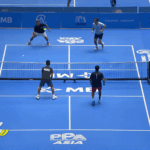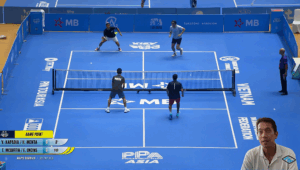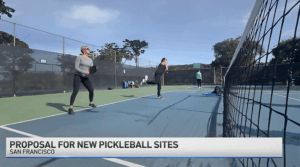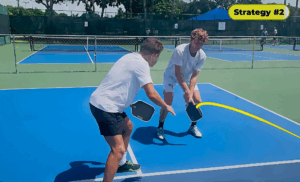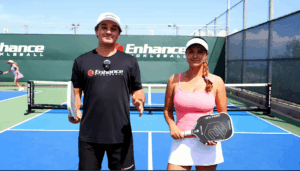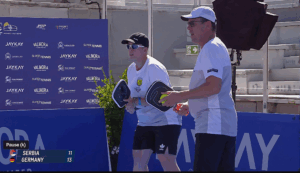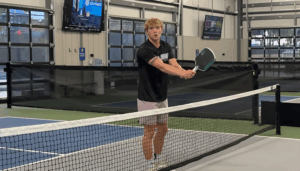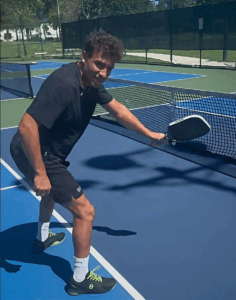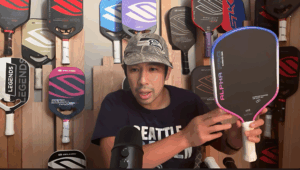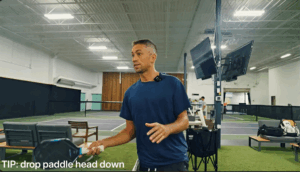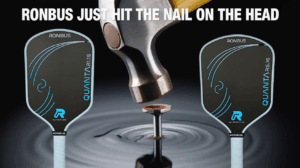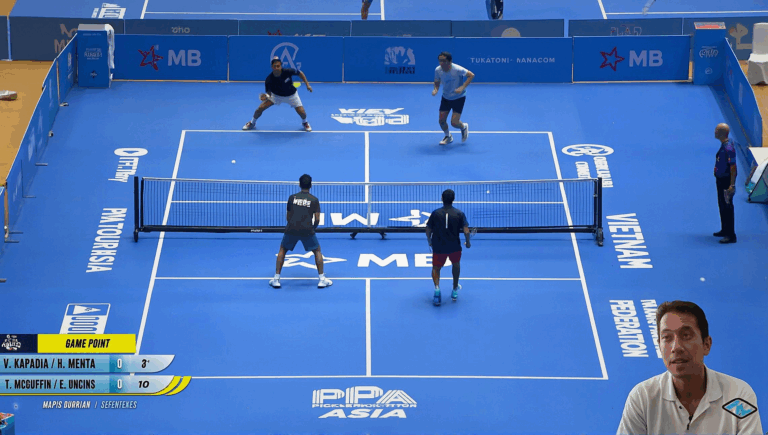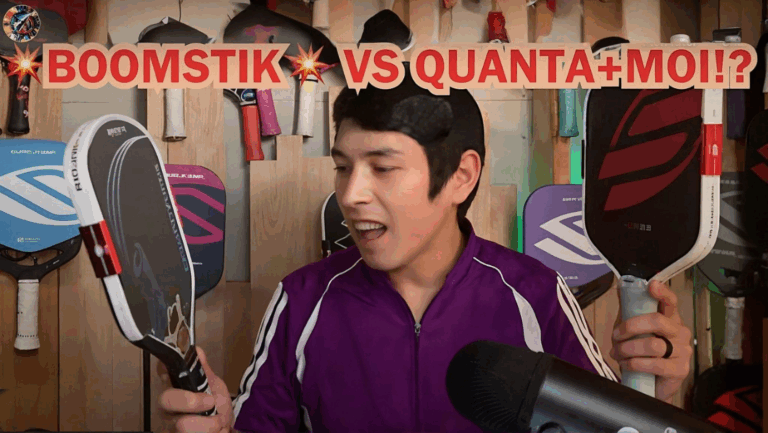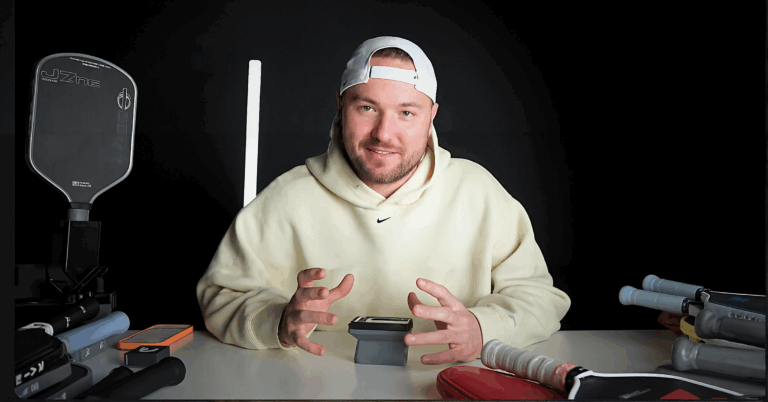Pickleball, a rapidly growing sport combining elements of tennis, badminton, and ping-pong, demands a unique blend of physical and mental skills. For beginners and intermediate players looking to elevate their game, mastering the essential skills efficiently is key. Memory chunking, a cognitive strategy that groups information into manageable units, can accelerate learning by making complex skills easier to process and retain. This article outlines a comprehensive plan using memory chunking to learn the top five most required pickleball skills: serving, dinking, volleying, groundstrokes, and court positioning. By breaking these skills into chunks and practicing them systematically, players can build a strong foundation for pickleball success.
Why Memory Chunking?
Memory chunking leverages the brain’s ability to organize information into meaningful groups, reducing cognitive overload. For example, instead of trying to memorize every aspect of a pickleball serve (stance, grip, swing, follow-through), chunking groups these elements into a single, cohesive concept. This approach enhances retention and recall, allowing players to focus on execution during gameplay. The plan below uses chunking to structure practice sessions, ensuring each skill is learned efficiently and applied effectively on the court.
The Top 5 Pickleball Skills
Based on expert analyses from sources like Pickleball Union and The Pickleball Clinic, the following skills are critical for pickleball proficiency:
1. Serving: The serve initiates every point and sets the tone for the rally.
2. Dinking: Controlled, soft shots in the non-volley zone (kitchen) to outmaneuver opponents.
3. Volleying: Hitting the ball in the air before it bounces, often at the net.
4. Groundstrokes: Forehand and backhand shots hit after the ball bounces, typically from the baseline.
5. Court Positioning: Strategic movement and placement to maximize coverage and shot opportunities.
Memory Chunking Plan to Learn Pickleball Skills
This plan organizes each skill into chunks, with targeted drills and practice schedules to reinforce learning. Each skill is broken into three to four key components (chunks) to simplify mastery. The plan spans four weeks, with three practice sessions per week (45–60 minutes each), allowing for progressive skill development. Adjust the schedule based on your availability and skill level.
Week 1: Serving and Dinking
Goal: Build a reliable serve and master soft control with dinking.
Skill 1: Serving
• Chunk 1: Stance and Grip
• Stance: Stand behind the baseline, feet shoulder-width apart, facing the target diagonally.
• Grip: Use a continental grip (like shaking hands with the paddle).
• Chunk 2: Swing Mechanics
• Motion: Swing underhand, contacting the ball below the waist.
• Target: Aim for deep corners of the opponent’s service box.
• Chunk 3: Follow-Through
• Finish with the paddle pointing toward the target to ensure accuracy.
• Drill: Serve 20 balls per session, alternating between right and left service courts. Focus on one chunk per set (e.g., Set 1: Stance and Grip, Set 2: Swing Mechanics). Use a mental cue like “Step, grip, swing” to tie chunks together.
Skill 2: Dinking
• Chunk 1: Paddle Angle and Grip
• Hold the paddle with a relaxed grip; angle it slightly upward for soft shots.
• Chunk 2: Body Position
• Stay low, knees bent, facing the net in the kitchen area.
• Chunk 3: Shot Placement
• Aim for the opponent’s kitchen, targeting sidelines or crosscourt angles.
• Drill: Pair with a partner or use a wall. Hit 15 consecutive dinks, focusing on one chunk at a time (e.g., paddle angle for first 5 shots). Use the cue “Angle, low, place” to chunk the process.
Practice Schedule:
• Session 1: 20 min serving (10 min each chunk), 20 min dinking (10 min each chunk).
• Session 2: 15 min serving (combine chunks), 25 min dinking (focus on crosscourt dinks).
• Session 3: 20 min mixed drill (alternate serving and dinking in a mock game).
Memory Tip: Visualize the serve as “Step, swing, point” and dinking as “Soft, low, place” to recall chunks during play.
Week 2: Volleying and Groundstrokes
Goal: Develop quick reflexes for volleys and consistent baseline shots.
Skill 3: Volleying
• Chunk 1: Ready Position
• Stand at the kitchen line, paddle up at chest level, knees bent.
• Chunk 2: Paddle Control
• Use short, controlled swings; avoid large backswings.
• Chunk 3: Shot Selection
• Choose between soft volleys (to drop into the kitchen) or aggressive volleys (to attack).
• Drill: Rally with a partner at the net, hitting 10 volleys each. Focus on one chunk per set (e.g., Set 1: Ready Position). Use the cue “Ready, short, choose.”
Skill 4: Groundstrokes
• Chunk 1: Footwork
• Position feet perpendicular to the net for forehand/backhand; step into the shot.
• Chunk 2: Swing Path
• Swing low to high for topspin; keep paddle face square for flat shots.
• Chunk 3: Contact Point
• Hit the ball in front of the body, at waist height, for optimal control.
• Drill: Have a partner feed 15 groundstrokes (forehand and backhand). Focus on one chunk per set. Use the cue “Step, swing, hit.”
Practice Schedule:
• Session 1: 20 min volleying (10 min each chunk), 20 min groundstrokes (10 min each chunk).
• Session 2: 15 min volleying (combine chunks), 25 min groundstrokes (alternate forehand/backhand).
• Session 3: 20 min mixed drill (volley-to-groundstroke rallies).
Memory Tip: Link volleying with “Ready, short, choose” and groundstrokes with “Step, swing, hit” for quick recall.
Week 3: Court Positioning and Integration
Goal: Master strategic movement and combine skills in rallies.
Skill 5: Court Positioning
• Chunk 1: Baseline Play
• Stay near the baseline for groundstrokes and serves; cover the center.
• Chunk 2: Transition Zone
• Move forward after groundstrokes, preparing for volleys or dinks.
• Chunk 3: Kitchen Play
• Position at the kitchen line for volleys and dinks; avoid stepping into the kitchen illegally.
• Chunk 4: Partner Coordination (Doubles)
• Move in sync with your partner; call shots to avoid collisions.
• Drill: Set up cones to mark baseline, transition, and kitchen zones. Practice moving between zones while hitting 10 shots per zone. Use the cue “Base, move, kitchen, talk.”
Integration Drill: Play mini-games (e.g., 5-point rallies) combining all skills. Start with a serve, transition to dinking or groundstrokes, and finish with volleys at the net. Focus on one skill per rally to reinforce chunks.
Practice Schedule:
• Session 1: 25 min court positioning (10 min each chunk), 15 min integration drill.
• Session 2: 20 min court positioning (combine chunks), 20 min integration drill.
• Session 3: 30 min mini-games, focusing on fluid skill transitions.
Memory Tip: Use “Base, move, kitchen, talk” for positioning; mentally rehearse all skill cues before games.
Week 4: Refinement and Game Application
Goal: Polish skills and apply them in competitive scenarios.
• Practice Focus: Combine all five skills in full games. Play 2–3 games per session, rotating partners if possible. After each game, identify one skill to refine (e.g., inconsistent dinking) and spend 10 minutes on a targeted drill from earlier weeks.
• Drill Example: If volleys are weak, return to the Week 2 volley drill, focusing on the “Ready, short, choose” cue.
• Memory Reinforcement: Before each game, recite all skill cues (e.g., “Step, swing, point” for serving). Visualize successful execution to strengthen memory chunks.
Practice Schedule:
• Session 1: 30 min games, 15 min targeted drill.
• Session 2: 25 min games, 20 min mixed skill drill (rotate through all skills).
• Session 3: 40 min games, focusing on seamless skill integration.
Additional Tips for Success
1. Mental Rehearsal: Spend 5 minutes daily visualizing each skill’s chunks. Picture yourself executing a perfect serve or dink, reinforcing the mental cues.
2. Feedback Loop: Record practice sessions (if possible) to review form and positioning. Alternatively, ask a coach or partner for feedback.
3. Rest and Recovery: Allow rest days between sessions to prevent burnout and consolidate learning.
4. Equipment Check: Ensure your paddle and shoes are suitable for pickleball to avoid hindering skill development.
Why This Plan Works
By breaking each skill into 3–4 chunks, the plan reduces the complexity of learning pickleball’s core techniques. The structured progression—focusing on two skills per week before integrating them—builds muscle memory and confidence. Memory chunking ensures that players can recall and execute skills under pressure, as each cue (e.g., “Ready, short, choose” for volleying) acts as a mental shortcut. Over four weeks, players will develop a solid foundation, ready to compete in recreational or competitive settings.
Conclusion
Pickleball’s appeal lies in its accessibility and strategic depth, but mastering it requires focused practice. This memory chunking plan provides a clear roadmap to learn the top five skills—serving, dinking, volleying, groundstrokes, and court positioning—efficiently. By dedicating consistent practice time and leveraging chunked learning, players can transform from novices to confident competitors. Grab your paddle, hit the court, and start chunking your way to pickleball mastery!

